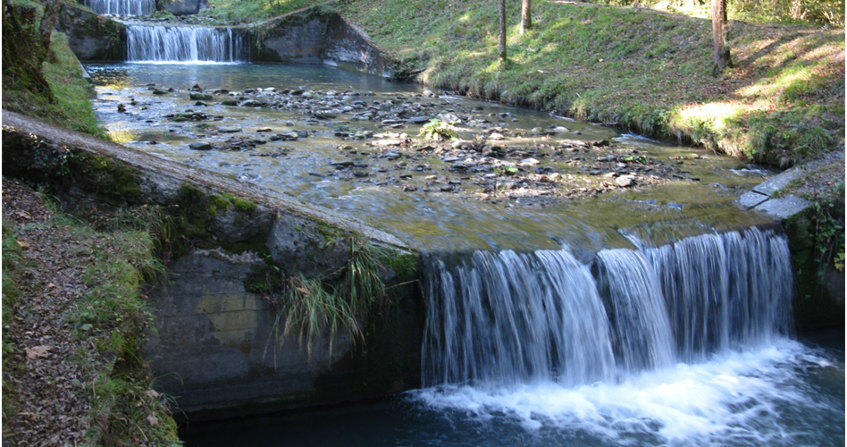山地法——如何调和自然和人类活动?
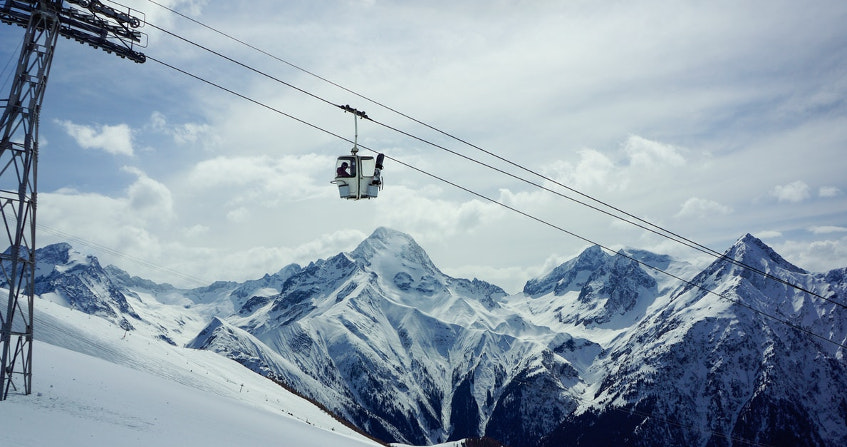
崇山峻岭令人心驰神往,但有时也会让人望而生畏。山地是一个既雄伟壮丽,又险峻脆弱的空间和生态系统。山地不仅有常住居民,也有热爱从事山地活动的访客。山区之间存在严重的社会经济不平等问题,正因如此,法国通过立法以促进这些地区的可持续发展。一方面,通过法规落实相关公共政策以应对山区生活面临的困难和挑战。另一方面,制定法律是为了保护自然环境、限制违规建筑物或减少与土地使用(休闲、农业、住房等)有关的矛盾冲突。因此, “山地法”应运而生。下面将从土地和城市规划的角度对其进行研究。
1. 为何在山区制定专门的规定
1.1. 起源
为了对山区生活提供保障,防治农村荒漠化进程,法国以一种独特的方式通过了专门针对山区需求和特点的立法。
为山区制定专门的法律,处理具体问题时体现区域差异性,从而使得适合山区生活的公共政策得以顺利推行,“山地法”概念正是在这种理念下产生的。不过,山地法赋予的权力并非是孤立的,因为普通法(如环境法、公共服务法)依然适用于山区,即使法官、自然人或法人对于该法的应用经常受到山区环境特性(例如气候或风险)的影响。当山区发生重大事故时,这些具体特征就会被媒体广泛报道。
山地法的历史源远流长。自19世纪以来,山区问题就一直受到立法者的特别关注。他们意识到人类活动对自然造成的干扰对整个国家都是有害的。19世纪末,立法的主要目标是通过在山上重新植树种草来保护土地(1860年7月28日和1864年6月8日的法律),接着是恢复和保护山区土地(1882年4月4日的法律)。当时成立了山地复原机构(RTM),该机构存在至今(参见为什么在急流中建筑大坝?)。
从城市规划的角度来看,温泉疗法和滑雪运动是在没有任何特定立法框架的情况下诞生的。这一领域的法律是在维希政权时期产生的。该政权希望通过建立具有国际影响力的冬季旅游胜地以实行品格教育[1]。1942-1944年,由城市规划师、建筑师和工程师组成的“研究考察团”成立,目的是为未来的法国滑雪胜地(当时的:瓦尔斯、查莫尼、贝尔维尔、德奥尔乌斯和圣邦地区、瓦尔·德·伊斯尔-蒂涅斯)预先制定功能和城市规划。此外,1942年4月3日颁布的第498号法案赋予了冬季运动和登山胜地法律地位[2]。然而,计划中的滑雪站当时并未“落地”。
1960年代和1970年代的“冰雪计划”进一步证明了从国家利益出发发展山区旅游经济的决心。1940年代的创新理念在综合度假村中得以实施(如雪场、接待能力、缆车连接滑雪场等概念)。创建受欢迎的滑雪站的愿望部分落空,结果难免会受到非议[3]。
1.2. 在空间的发展和保护之间寻求平衡
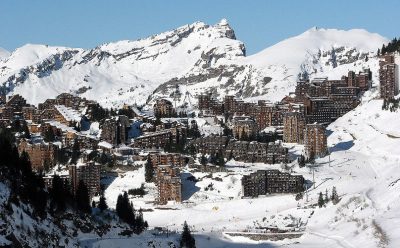
[资料来源: By Look Sharp! [GFDL (http://www.gnu.org/copyleft/fdl.html) or
CC BY-SA 3.0 (https://creativecommons.org/licenses/by-sa/3.0)],from Wikimedia Commons]
自1970年代初以来,环境保护一直是各国政府的承诺。此后,1976年7月10日颁布的关于自然保护的第76-629号法案,以及2005年3月1日颁布的《环境宪章》第2005-205号法案,都强调了对自然的关注。
高海拔地区的城市化管理和滑雪场开发成为公共政策的组成部分(图1)。在这方面,共和国总统瓦莱里·吉斯卡尔·德斯坦(Valéry Giscard d’Estaing)于1977年8月23日在瓦卢瓦兹发表的讲话尤为值得一提。他主张实行真正的山地政策。1977年11月22日颁布的第77-1281号法令批准了一项关于保护和开发山区的国家规划指令,体现了德斯坦总统的这一立场。其目的是限制土地竞争,避免建筑物分散,促进有规划的旅游业发展。
1985年1月9日颁布的第85-30号法案被称为“山地法”,该法案旨在寻求山区发展与保护之间的平衡。该法获得全票通过,希望以全面的方式处理各种问题,改善山区的生活,同时考虑到区域特殊性,赋予地方政府更多管理城市规划事务的权力。
尽管法律雄心勃勃,但由于城市扩张和对山区影响的不断扩大,寻求平衡的努力收效甚微[4]。根据2016年12月28日第2016-1888号法案修订和合并了被称为“山地2号”的山区现代化、开发和保护项目。不过,1985年的法案仍以人类中心主义和务实的方法为基础,旨在从可持续发展的角度为山区带来最大利益[5]。
尽管“山地2号”法案取得了一些进展,但它并不像1985年的法律那样具有创新性,也没有进行详尽的法律改革。法国仍然受《阿尔卑斯山保护公约》的约束,但该公约对公共政策的启发仍然太少。在国际法中,山区首先被视为一个需要保护的空间。事实上,2016年的法律并未获得一致通过。1985年,在达成复兴山地的共识之后,又涌现了各种不同的愿望,包括规范甚至限制山地的使用,旅游业的多样化以及保持滑雪经济的国际竞争力(山地“自然资源”与山地“游乐园”)等。以滑雪为中心的开发模式已不再是共识。
1.3. 什么是法律意义上的山地?
与外观相反,山地这一概念不易界定。从直觉上来说,山会让人联想到海拔、地势、气候和特定的人类生活[6]。然而,法律并未对山地做出明确定义。法律只是在不同的条文中提及“山地”。法律意义上山地的定义将应用于各种法律制度,如农业援助或城市规划。
根据《山地法》的规定,山地的特点是存在严重障碍,导致生活条件更加困难,并限制了某些经济活动的开展(《山地法》第3条)。部际法令根据以下标准对山地进行分类:一是海拔和气候;二是是否存在陡坡。
然而,山区的概念并不包括所有形式的山脉。此外,由于2011年6月6日的通知规定,山区必须“根据其当前含义”来理解,因此对于应急服务的干预而言,山地的含义更加模糊。无论怎样,被划定的城市数量从1960年代初的3,854个增加到2017年的6,158个(法国本土6092个,海外66个)[7]。
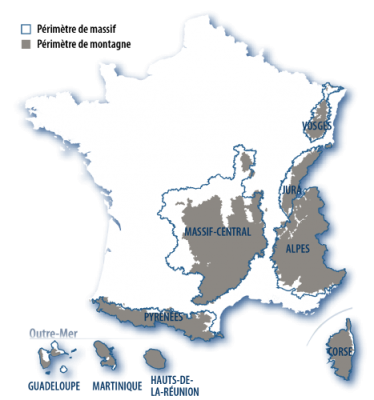
[资料来源: CGET -领土观测站]
(译者注:Perimetre de massif 版块边界;Perimetre de montagne 山地边界;Vosges 孚日山脉;Jura 侏罗山脉;Alpes 阿尔卑斯山;Massif-Central 地块中央;Pyrenees 比利牛斯山脉;Corse 科西嘉岛;Guadeloupe 瓜德罗普岛;Martinique 马提尼克岛;Hauts-de-la-reuion 留尼汪岛)
应该指出的是,除了行政意义上的山地之外,还有法律承认的山地。甚至还成立了一个专门的机构“山脉委员会”,在促进可持续发展方面肩负着多重使命:为山脉的规划和发展起草区域间计划,在旅游开发运营期间提供意见和建议[8]。法令规定,山脉是一个更大的区域,包括山地,也包括与山地相邻的山麓或平原(图2)。据《山地法》第5条,山脉包括:阿尔卑斯山,科西嘉岛,中央山脉,侏罗山脉,比利牛斯山脉,沃斯盖斯山脉。
2. 山城——开发建设应遵循哪些原则?
各种法律原则仅适用于山地,最具代表性的例子如下。
2.1. 建设是现有城市化的延续
这是法国城市规划法最重要的原则之一。包括全面禁止孤立的城市化,因为“城市化是在村庄、村落、小村庄、传统建筑群或现有住宅保持延续性的情况下进行的(…)”[9]。因此,该原则旨在反对与保护环境、保护农业用地或限制自然风险不相容的山地建设的“无序扩张”。
然而,自1985年在《山地法》对这一原则做出定义以来,该原则已被放宽。随着修正案的出台,该原则已经失去了效力,甚至失去了意义,因为许多例外或减损都是可能的——无论是法律规定的,如在建筑物上建造附属设施或建设新的旅游单位,还是当地城市规划文件所允许的。
如何评估连续性?《城市规划法》没有准确界定“连续性”的概念,例如规定建筑物之间的最小距离。然而,法律规定,连续性的评估基于以下三个标准[10]:传统栖息地的地方特色,建筑物的建设,以及存在道路和网络。
在实践中,基本上是由行政法官根据当地的具体情况(通常有地图和照片为证)来判断是否正在发生城市化,之后决定是否继续该建设规划,进一步扩大城市化范围。连续性的概念可以是绝对的毗连性,也可以是现有建筑与项目之间的较小距离。
示例:连续性必然隐含着邻近性。对于距离城镇和村庄数公里、距离几栋建筑物只有数百米的地区来说,情况并非如此,即使该土地位于当地城市发展规划中的城市区域,具有建设潜力[11]。
2.2. 保护农业用地
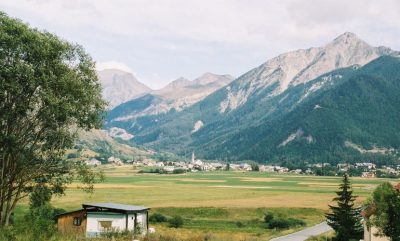
[资料来源: By Fr. Latreille[资料来源: By Fr. Latreille[GFDL (http://www.gnu.org/copyleft/fdl.html) or CC BY-SA 3.0 (https://creativecommons.org/licenses/by-sa/3.0)], from Wikimedia Commons]
在山区,《城市规划法》要求保留发展农业、畜牧业和林业活动所需的土地,尤其是位于山谷底部的土地(图3)。根据这些土地在当地农业系统中的作用和地位,评估保护这些土地的必要性。此外,还需考虑它们与农场位置、地势、坡度和暴露程度的关系[12]。
什么是要保护的“好”土地?行政法官指出,山区应优先保护的农业土地是平坦或略微倾斜的土地(坡度较低),可以进行机械化作业(通常是与畜牧活动相辅相成的干草甸)[13]。
如何保护这些土地?主要取决于城市规划文件如何根据地方一级的其他利益(住房、旅游)进行规划。无论如何,城市化区域的承载能力必须与自然和农业区的保护兼容[14]。
不过,《城市规划法》规定了各种例外情况[15]:可授权在农业区或需要保护的土地上建造:
- 农业、畜牧业和林业活动所需的建筑;
- 与滑雪和徒步旅行相关的运动设施;
- 高山小屋和避暑建筑(焦点3)。
2.3. 保护水体两岸
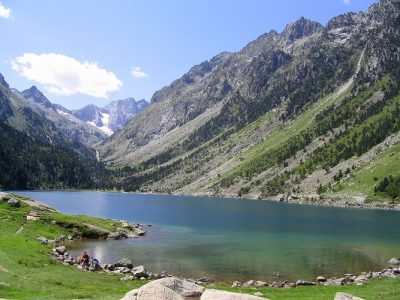
[资料来源: 知识共享署名2.5通用许可,通过维基共享]
在山区,面积小于1000公顷[16]的天然或人工水体堤岸在距岸边300米范围内受到保护(图4)。禁止建设新建筑、设施、道路。禁止所有开采活动和冲刷行为[17]。然而,也存在大量例外情况,允许在限制性条件下施工(特别是避难所、中途停留站、自然露营区、游泳、水上运动、步行或徒步旅行所需的接待和安全设施)[18]。
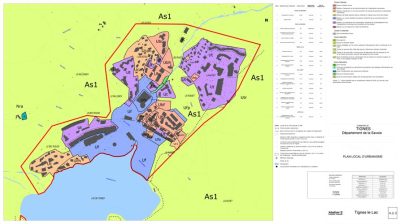
[资料来源: 公开文件,可在www.mairie-tignes.fr上查阅]
如何欣赏水岸的“自然”特性?这是对发生争议时由行政法官主导控制的情况下(图5)进行具体分析的结果。安装滑雪升降机的土方工程不会影响自然性,但如果该空间用于开采大型采石场,或者如果该空间与国道和废弃铁路线接壤,则自然性不复存在[19]。
2.4. 旅游业发展的“平衡”
在山区,旅游业的发展,特别是新旅游单位的创建或扩展(见焦点2.),必须考虑若干标准,才能使旅游发展具有平衡性[20]。
任何发展或设施规划必须首先考虑地方当局(包括外国边境城市)的利益共同体。
其次,还必须考虑到山区对气候变化的脆弱性。尽管措辞模棱两可,但2016年“山地法2号”中的这一创新性条文可被看作是针对开发商的“审慎原则”,以便从对水资源、农业用地或能源消耗的影响方面正确衡量项目造成的影响。
发展和设施规划还必须促进经济活动和休闲活动之间的平衡,特别是通过促进旅游活动的多样化,合理利用现有建筑遗产和新建筑的租赁管理模式。
最后,新旅游单位的选址、设计和建设必须尊重景点的质量和自然平衡。行政法官对此行使广泛的控制权,以确保这些原则得到正确执行[21]。例如,行政法官废除了批准创建或扩建滑雪场项目的省法令。如停止建设沃雅尼或昂皮斯滑雪场,因项目建设会对景观、动植物造成不可逆转的损害,会暴露于自然风险中[22]。
3. 我们能否不顾自然风险进行建设?
在人们的印象中,山往往被视为一个容易发生事故的空间(图6)。因此,山与危险或风险的概念密切相关。由于全球变暖,山脉变得更易到达(特别是可以在更高的海拔进行建设)也更危险,因此考虑自然风险的问题变得更加严重和具有现实意义(如土壤不稳定等,参见环境百科全书的“自然风险”部分)。
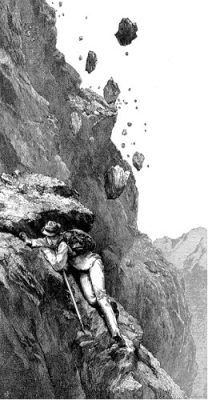
在法国,公共当局长期以来满足于应对自然事件造成的事故。因此,面对“伤亡事故”,国家首先改进了应急服务,以便在事故发生时能够迅速干预(应急组织计划、组织民防响应计划[23])。其次,加强对受害者的赔偿,并在发布自然灾害命令时使受害者更容易获得赔偿[24]。
这种被动型的行动对风险防范文化的形成并无助益。面对不断增多的悲剧,国家将预防作为优先事项,采取了由公共信息措施和程序组成的全球系统,以加强土壤控制,甚至征用过于暴露于风险的财产[25]。简而言之,公众行动从应对事件延伸至防范事件发生。
3.1. 规避风险——防止财产损失和人身伤亡
目前已经制定了众多法律手段来规避自然风险,使建筑物远离危险。例如市长或省长可以公共安全为由拒绝批准建设项目[26]。当地的城市规划项目可以禁止在危险地区进行建筑施工,并将相关地块划为自然区域。
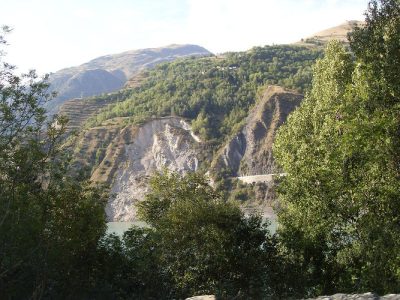
[资料来源: By Otourly[GFDL (http://www.gnu.org/copyleft/fdl.html) or CC BY-SA 4.0
(https://creativecommons.org/licenses/by-sa/4.0)], from Wikimedia Commons]
最后,国家有权制定《自然风险预防计划》(PPRNP)。自然风险伤亡事故曾造成众多伤亡事故,例如1970年瓦勒德塞雷雪崩摧毁了加州大学巴勒斯坦分校(UCPA)的一座小屋,造成39人死亡;1987年大博尔南德洪水席卷营地,造成23人死亡;1999年查莫尼克斯附近蒙特洛科村庄发生雪崩,摧毁14座房屋,造成12人死亡。在发生了无数悲剧之后,国家大力加强制定自然风险(洪水、雪崩、洪流、地面运动)预防计划[27]。
《自然风险预防计划》划定了“暴露于风险”的区域和“不直接暴露于风险”的区域。规定了公共当局(图7)和个人必须采取的预防、保护和保障措施。这些措施在法律上被称为公用事业地役权,具有约束力。例如,即使当地城市规划许可,这些措施依然可以阻止被雪崩摧毁的建筑物的修复工作[28]。截至2016年12月31日,10,913个法国城市已获得批准的《自然风险预防计划》[29]。
3.2. 承担风险——防范事故后果
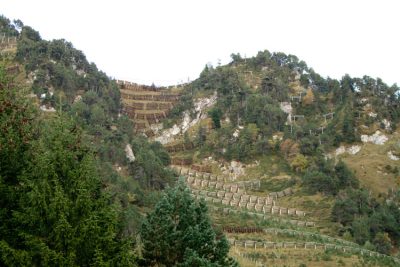
[资料来源: ©Nathalie Petrel, ONF]
发展的压力如此之大,我们必须下定决心学会与自然风险共存。因此,当预防措施在经济上或社会上遥不可及时,应采取保护财产和人身安全的措施来限制事故的后果或影响。这是一个风险承担的问题。预防指预防事故的发生,保护工作可以预防事故发生。
除了遵守适用于山区风险地区的建筑标准外,开展保护工作的要求通常源于自然风险预防规划。实际上,这些规划可规定开发、使用或利用现有资产的措施,以减少其脆弱性并确保人员安全或限制对其造成的损害。这些地役权或“义务”对公共当局(建设保护设施、防护网、排水系统、溪流清洁等)以及私人业主(改造建筑、排水、使外墙适应水流、建筑物的高度、避难层、某些设备的地面锚固、电路供水等工程)具有约束力。
除了为休闲活动提供场地,生产木材或保护生态系统,森林还具有保护人民和财产免受自然灾害侵害的功能。森林可用作物理屏障,通过创建物理屏障或稳定土壤或积雪来抵御岩石崩塌、雪崩等风险。然而,要使森林成为有效的自然屏障,必须对其进行开发(树木砍伐和修剪、树干在斜坡上的排列、创建防雪崩系统,制定树木更新的管理规划)。这些所谓的森林“保护”由国家分类,并受特别法律制度[30]约束。一方面,这种分类禁止任何可能损害造林养护的土地使用。另一方面,地役权对土地使用许可证的申请具有强制性。此外,加固土壤、防止雪崩等必要工作可由国家(蒙特涅—RTM地形恢复服务)(图8)实施。
4. 我们如何管理日益频繁的山区休闲活动?
管理山地休闲活动非常重要。环境法试图回答这个问题。例如,《环境法》第L.362-1条禁止机动车在国家、省市的公共道路、农村道路和向公共开放的私人道路之外行驶。此外,《环境法》第L.363-1条禁止在山区的飞机场外以休闲为目的用飞机送客(即用直升机送滑雪者)。
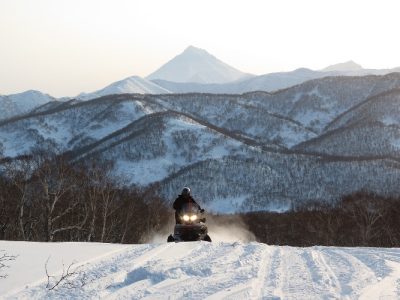
[资料来源: 皮克斯湾,免版税]
雪地摩托是机动车辆[31],因此从理论上讲,驾驶雪地摩托受到很大限制(图9)。然而,为了方便游客,雪地摩托被广泛使用。立法者制定了法规,允许在自然环境中使用这些设备,同时尽可能限制它们对环境、公共安宁或安全的影响。该法规禁止在自然环境中开辟路线用于雪地摩托驾驶娱乐休闲活动。不过,雪地摩托可在为其专门设计的土地上行驶。如果面积超过4公顷,这些土地也要受UTN程序约束(焦点2)。需在专门“土地”而非“路线”上行驶,否则就是违法行为[32]。
不过,需要指出的是,自2016年以来一直存在例外规定。在滑雪胜地,提供现场餐饮服务的高海拔旅游机构经营者可以获得市长或省长的授权,允许其在缆车关闭时,使用专为雪上行进而设计的机动设备在滑雪区运送顾客[33]。
5. 在没有雪的低海拔度假村,如何处理旅游荒地?
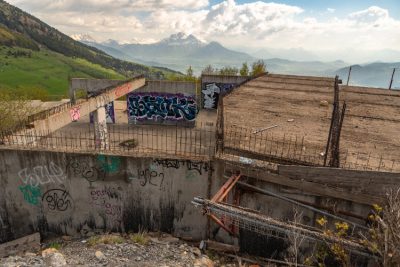
低海拔地区将首先遭受没有雪这一气候变化的影响[34]。滑雪休闲活动被视为永恒的休闲活动,在2016年12月28日的法律颁布之前,法国没有任何文件要求拆除过时的机械[35]。虽然滑雪缆车可以在雪期以外的时间用于其他休闲活动(下坡山地骑行、徒步旅行),以达到全年旅游的目的。但由于缺乏可行的经济活动,许多设施仍将不得不拆除,除非它们改变山区景观,让荒地繁荣起来。如今,城市规划法规定,在获得滑雪缆车作业授权的同时,有义务在缆车最终关闭后的三年内将其拆除并修复场地[36]。
尽管这一义务的法律制度仍有待明确(迄今为止,法律尚未对拆除资金问题做出规定),但这一进展表明,人们已经意识到,如果出于开发旅游业的愿望进行了不合时宜的投资,或者遭遇了全球变暖的气候状况,雪场可能会变成荒地。要考虑设施停止使用后进行拆除处理,将空间回归自然(图10)。
6. 需要记住的信息
- 山地是一个特定的环境,受特定和适用的法律管辖,在经济发展和自然环境保护之间寻求平衡。
- 这部山地法的特点是希望控制城市化和管理自然风险。
- 这些法规还必须应对新的挑战,如娱乐活动的增多和由于气候变化而弃置的低海拔度假胜地。
参考资料及说明
封面照片:缆车——斯特拉·卡拉曼(Stella Caraman)摄影。[资料来源:Unspash,免版税图片]
[1] TRAVERS, A., Politics and representations of the Vichy mountain. La Montagne éducatrice, 1940-1944, L’Harmattan, 2001.
[2] JOYE, J.-F., Vichy and the legal tools of mountain tourism development, in Ph. Yolka dir. Les loisirs de montagne sous Vichy. Law and politics. PUG, 2017, pp. 153-188.
[3] CHAPPIS, L., Ma Montagne… du rêve à la réalité, Tome 1, FACIM, 2003 p. 27.
[4] JOYE J.-F. (dir.), L’urbanisation de la montagne. Observations from the legal side, Univ. Savoie, LGDJ, 2013.
[5] JOYE, J.-F., Construire et aménager en montagne après la loi du 28 décembre 2016 : les communes face à leur responsabilité, la Revue Juridique de l’Environnement, n° 2, juin 2017, pp. 209-331.
[6] VEYRET, P. and G., Essay on the definition of the mountain, Revue de Géographie Alpine, 1962, n°50-1 p. 6.
[7] Source: http://www.anem.fr/communes-classees-montagne.asp?ref_mere=2203&ref_arbo=2237.
[8] 山地法第7条。得到众多警察局(国家行政部门)协助。Art. 7 of the Mountain Law. They are assisted by the massive police stations (State administration).
[9] 详尽定义参见 Article L. 122-5 of the Town Planning Code.
[10] Art. L. 122-5-1 of the Town Planning Code.
[11] Conseil d’Etat, 14 Dec. 1992, Commune Saint-Gervais-les-Bains, n° 115359 (all the case law references cited are available on: https://www.legifrance.gouv.fr).
[12] Art. L. 122-10 of the Town Planning Code.
[13] Council of State, 6 Dec. 1993, Morand No. 77708.
[14] Art. L. 122-8 of the Town Planning Code.
[15] Art. L. 122-11 of the Town Planning Code.
[16] 面积超过 1000 公顷的水体受海岸线特有法律制度管辖(《城市规划法》第 L. 121-1 条及以下)。
[17] Art. L. 122-12, para. 1 of the Town Planning Code.
[18] 所有可能例外情况,参见 Articles L. 122-13 and Art. L. 122-14 of the Town Planning Code.
[19] Conseil d’Etat, 28 July 2004, Sté Thomas, n° 256154; Conseil d’Etat, 9 Oct. 1989, SEPANSO, n° 82094; Conseil d’Etat, 23 Oct. 1995, Association Artus, n°154401.
[20] Art. L. 122-15 of the Town Planning Code.
[21] Conseil d’Etat, 15 May 1992, Commune de Cruseilles, n°118573.
[22] Conseil d’Etat, 10 Dec. 1993, Ministère équipement c/ Association ARPON, n°110697; Conseil d’Etat, 4 July 1994, Vaujany, n°129898.
[23] The ORSEC plan dates back to the Ministerial Instruction of February 5, 1952.
[24] Law No. 82-600 of 13 July 1982 on compensation for victims of natural disasters.
[25] Law No. 95-101 of 2 February 1995 on environmental protection, for example.
[26] Pursuant to Article R. 111-2 of the Town Planning Code.
[27] Created by the “Barnier” law n° 95-101 of 2 February 1995 (environmental code: articles L. 562-1 et seq., R. 562-1 et seq.).
[28] Council of State, 17 Dec. 2008, Falcoz, No. 305409.
[29] Source G.A.S.S.P.A.R. of the Ministry of Sustainable Development in Rapport annuel sur la gestion du fonds de prevention des risques naturels majeurs, annexe jaune du projet de loi de finances pour 2018, p. 19.
[30] Art. L. 141-1 to L. 141-7, R. 141-1 to R. 141-42 of the Forest Code.
[31] Conseil d’Etat, 30 Dec. 2003, Syndicat national des professionnels de la moto-neige, n° 229713
[32] Conseil d’Etat, Nov. 5, 2014, Commune Saint-Martin de Belleville, No. 365121.
[33] Articles L. 362-3 and R. 362-1-1-1 et seq. of the Environmental Code. See Decree No. 2016-1412 of 21 October 2016, which applies article 22 of Act No. 2014-1545 of 20 December 2014. V. Ph. YOLKA, A “good” decree after a bad law, JCP ACT Review, n°8-2017, Quick overview, 144.
[34] BONNEMAINS, A., Vulnerability and resilience of an alpine development model: Territorial trajectory of the high-altitude winter sports resorts of Tarentaise, Thesis, 2015, Université Grenoble-Alpes – LOUBIER, J. Chr., Perception et simulation des effets du changement climatique sur l’économie du ski et la biodiversité, Savoie et Haute-Savoie, Thèse Grenoble I, 2004.
[35] JOYE, J.-F., L’exigence de remise en état des lieux après la fermeture définitive des stations de ski : une problématique juridique nouvelle, Juristourisme, mars 2013, pp. 30-32.
[36] Art. L. 472-2 and L. 472-4 of the Town Planning Code.
环境百科全书由环境和能源百科全书协会出版 (www.a3e.fr),该协会与格勒诺布尔阿尔卑斯大学和格勒诺布尔INP有合同关系,并由法国科学院赞助。
引用这篇文章: JOYE Jean-François (2024年3月13日), 山地法——如何调和自然和人类活动?, 环境百科全书,咨询于 2024年4月25日 [在线ISSN 2555-0950]网址: https://www.encyclopedie-environnement.org/zh/societe-zh/mountain-law-reconcile-exceptional-nature-and-human-activity/.
环境百科全书中的文章是根据知识共享BY-NC-SA许可条款提供的,该许可授权复制的条件是:引用来源,不作商业使用,共享相同的初始条件,并且在每次重复使用或分发时复制知识共享BY-NC-SA许可声明。







